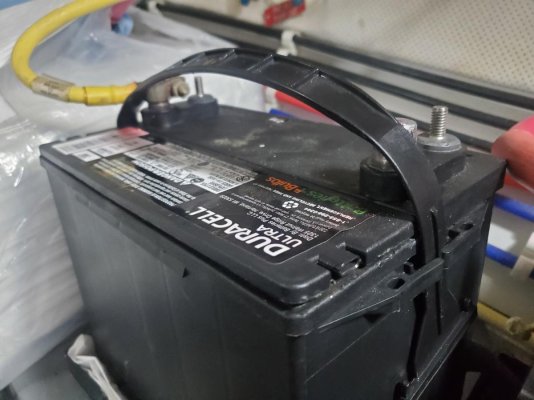Thanks Jack. That is correct! In that, there are some much more rugged, larger sized, considerably added weight, greatly increased power storage "Deep Cycle" battery makes, types and charging/use-systems to chose from. At comparatively greatly elevated costs.
However, that cost-rise may be triple, quintuple or even much higher by taking into account the numerous additional added costs for high tech batteries requiring sophisticated charging apparatus and complicated use-systems. Although there are some notably more expensive deep cycle, house-bank battery setups that
seem anecdotally to last long durations, there is also too often anecdotal reports on setups [of many different expensive battery types, charger configurations and DC power use-systems] that do not last any longer than my inexpensive type 31, LA, distilled water, wet-batt house bank set up. Life span on my batt set up goes from a low of of six years to a high of ten... before I need to replace
only all four of the house bank batts. 14 years ago my cost was well under $500. Next replacement [7 +/- years since last replacement] the cost should still be under $700. Takes me about four hours to accomplish total replacement]. Boat house bank batt cost per annum: $100 +/- !!
For further clarity... Due to my many decades [1950's, 60's onward] of anchor out pleasure-boat-play/cruising to points of interest and short term liveaboard while at anchor or mooring: I am
enormously conservative in use of DC power while away from dock AC power. So much so... that while staying aboard with no battery charging applied my house bank power storage in this simple and inexpensive house bank set up can last up to 72 hours before hitting the 50% charge level; that IMO demands a full charge level to be regained [I actually like to recharge when batts hit the 60% level]. On my boats, while away from dock, house bank recharging is achieved by either flipping on the charger breaker while running the gen set [to cook, cool the fridge and/or watch TV as well as charging phones/computers], charging also automatically happens while cruising [or running the starboard engine solo]. Also have small solar panel hooked into gen set starter batt to make sure that stays 100% charged.
So... the point I'm trying to get across to all levels of boaters [especially the pleasure boaters who are weekend warriors with occasional multi week or (even multi month) stay aboard cruises:
It is not absolutely necessary to spend thousand$$ of dollars to install or to get upgraded into the most advertised new-age, high tech DC battery and charger galore, use-complicated house bank, deep cycle battery $y$tem on your boat. Unless of cour$e you feel like doing $o!
In New England waters during the 1950's 60's mentioned above my family of five would cruise for weeks on end with just a few large LA wet batts keeping us well powered for DC electric needs. Much fun was had by all! Only notable difference aboard our boats, in comparison to yester year, is that now we have a genset and solar panel at our avail.
I don't want anyone to get me wrong... If several thousand$$$ are spent to install the most advanced battery package on a boat - then living aboard can be made to seem DC powered enough to resemble the nearly unlimited electric comforts of home. However, that's not my game plan for pleasure boating and for the relaxation offered by inexpensive, easy to deal with battery and charger systems.
Simple is as Simple Does!!










